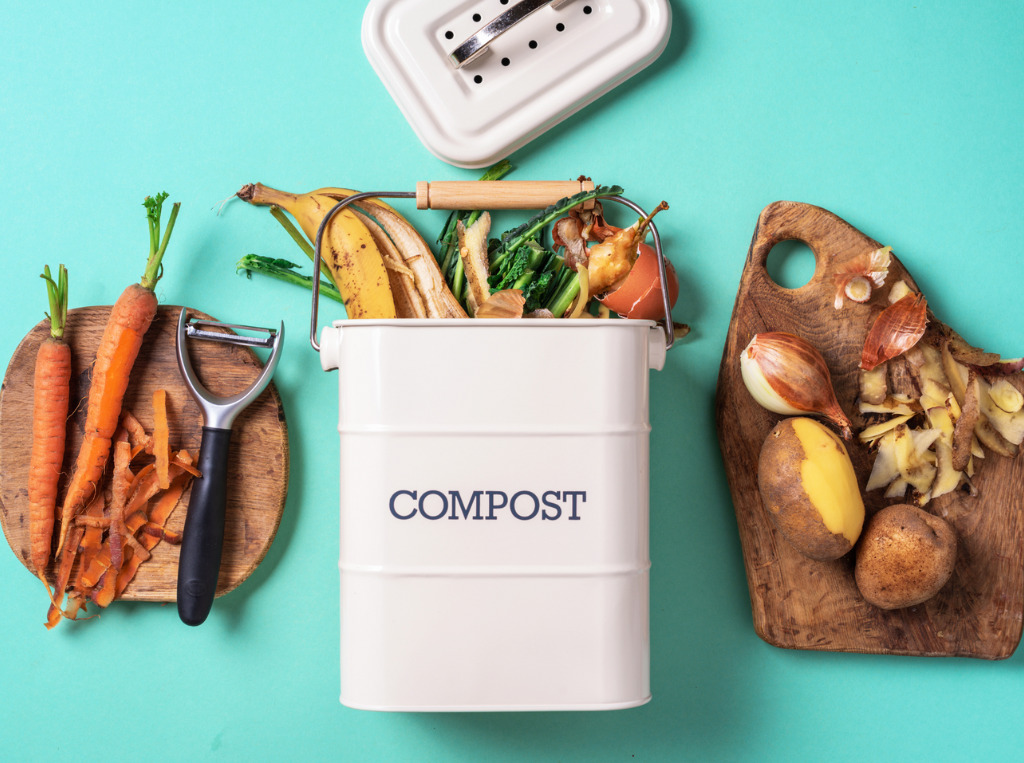10 Mins Read
Food waste is a massive problem across the globe, and while governments need to step up their efforts, there are some things we as consumers can do to help the cause – here are some of the best home composters you can buy, alongside their pros and cons.
It’s pretty well-known that we waste a third of all food produced in the world (in Asia it’s a shocking 50%). It’s something that’s worth $1 trillion per year and can feed – wait for it – two billion people. That’s a quarter of the entire global population, or put another way, more than six USAs.
Speaking of, Americans only compost 5% of the 66.2m tons of food waste they produce every year, and only 12% of households have access to a municipal food waste collection service. It’s the material sent to landfill more than anything else. This is a problem.
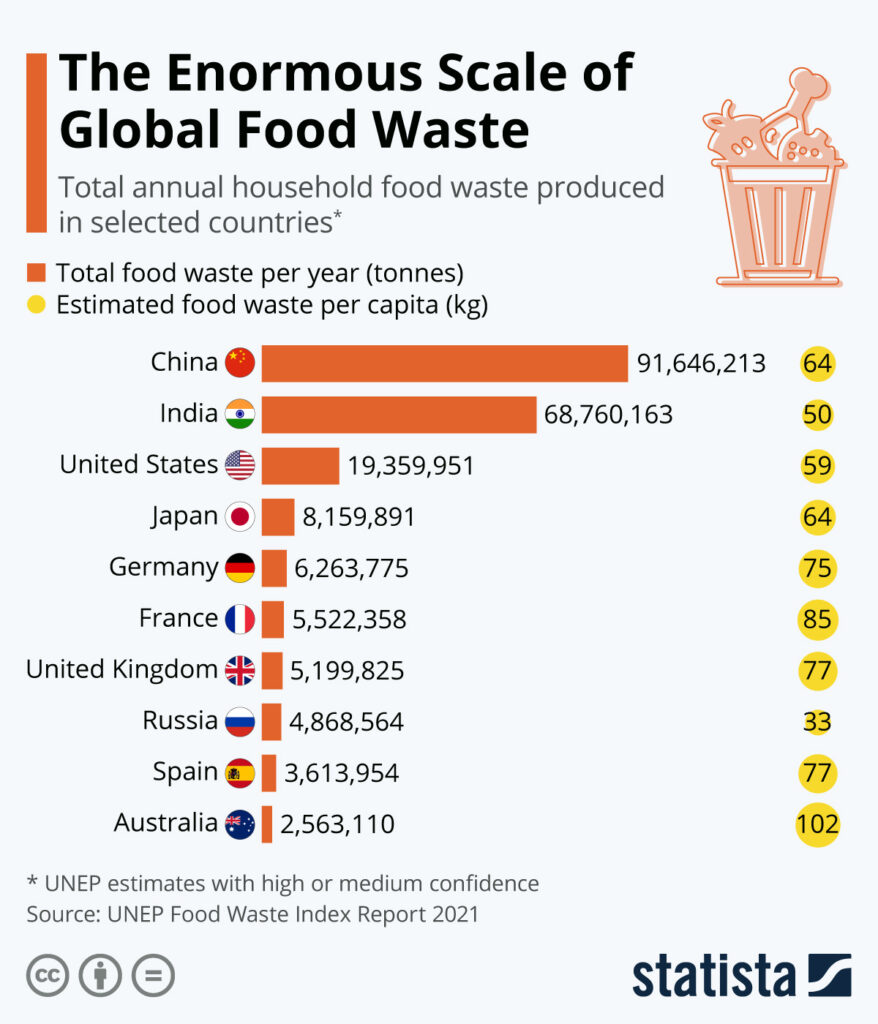
Apart from the fact that it costs a lot of money and can feed a lot of people, food waste is terrible for the environment. Food loss and waste account for 4.4 gigatonnes of greenhouse gas emissions (GHG) annually – to put that into context, if it were a country, only China and the US would emit more GHGs than food waste.
In its list of Top 20 High-Impact Climate Actions For Households And Individuals, climate action non-profit Project Drawdown cites reducing food waste as the single most impactful thing citizens can do to fight the climate crisis and lower personal GHG emissions.
We need to be better at the way we handle our food, and policy intervention is key. But going back to the compost bit, there are some solutions that can help consumers take a stand and improve their food footprint. Some companies have been offering home composting solutions for years now, and while they’re not perfect, they still possess a lot of benefits and help address food waste.
Here are some of the best home composters / food waste reducers on the market:
Lomi Classic
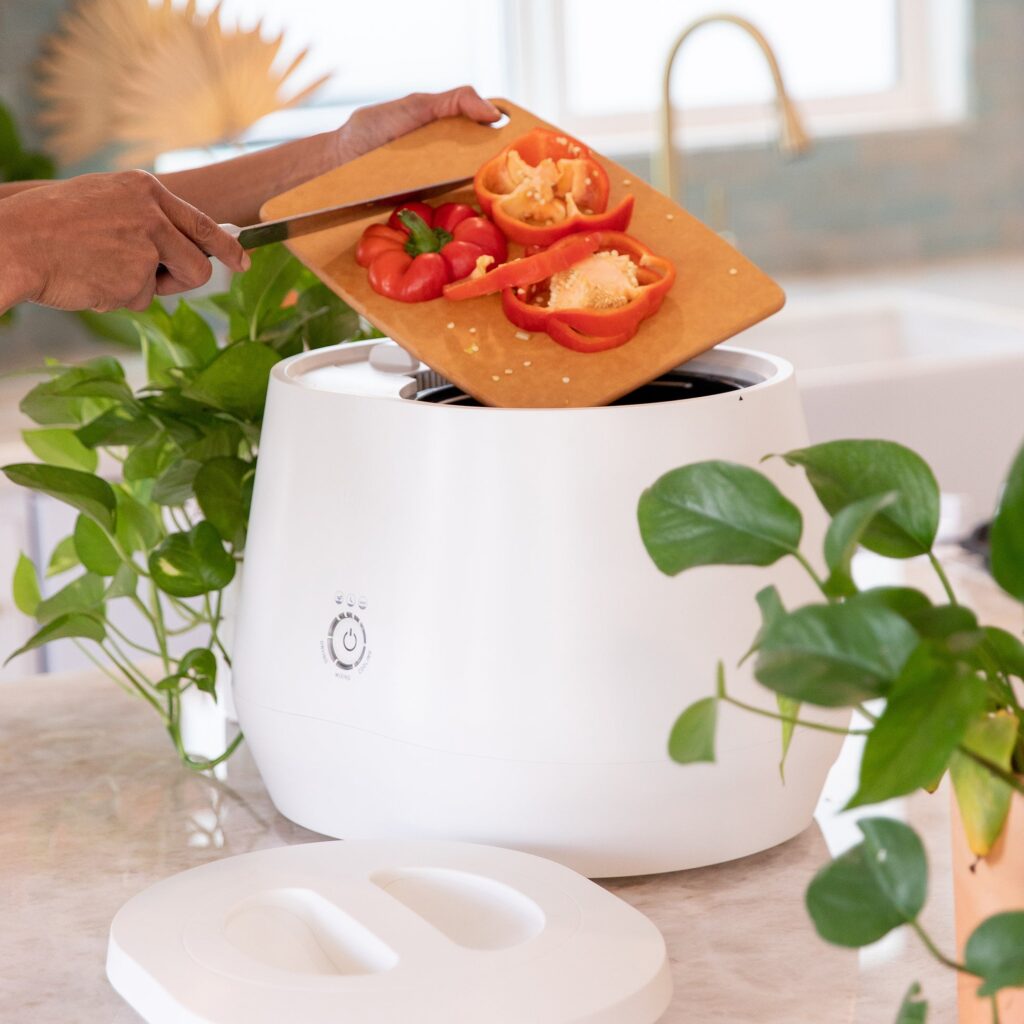
Perhaps the most well-known next-gen smart home composter out there (or at least the most advertised), Lomi breaks down food waste using heat, abrasion and oxygen. It has three modes: Eco Express (three to five hours for produce and plant waste), Lomi Approved (five to eight hours for food, organic waste and bioplastics), and Grow (16-20 hours for produce to preserve microorganisms and create nutrient-rich compost).
Essentially, Lomi grinds your food waste into smaller particles akin to soil and comes with a heatproof stainless steel internal bin and two refillable activated charcoal filter chambers. It is said to produce odourless waste and can handle 3 litres of waste at a time.
Pros: The capacity is large and it breaks down more food than most other home composters, according to online reviews. The streamlined single-button design is helpful, and the control panel shows whether the food is at the drying, mixing or cooling stage. The charcoal filter contains odour, a LomIPod helps add nutrients, and the three modes provide versatile composting options with clear instructions on what can go in.
Cons: Strictly speaking, Lomi’s compost isn’t actually compost – instead it dehydrates and grinds down waste. This isn’t biologically the same as compost, which involves microbes decomposing organic matter, and this means it can rot once rehydrated. Additionally, It’s quite a large appliance and requires a sufficient amount of countertop space in your kitchen. Lomi can be noisy too and its lid a little finicky, according to online reviews. Plus, the price is a barrier to many: it costs half a thousand dollars, and the refill pods and filters last 45 cycles and cost $50.
Where to buy: Lomi is available on its own website or via Amazon for $499.
Vitamix FoodCycle
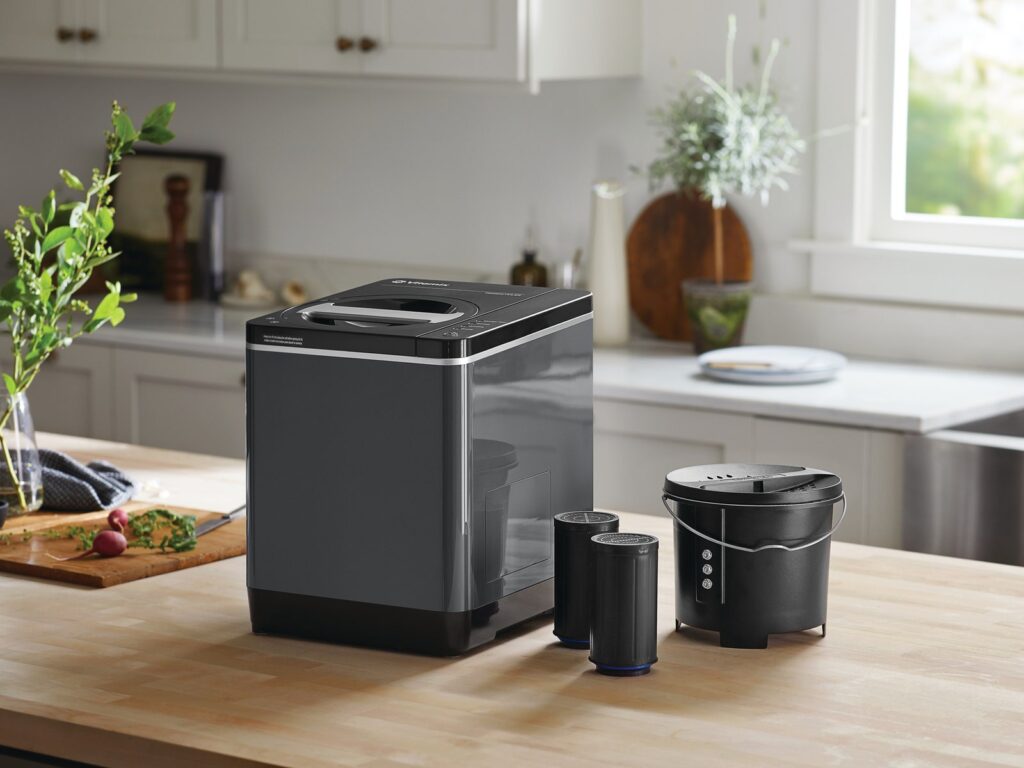
Probably Lomi’s main competitor, the FoodCycle is a smart home composter by the blender-famous brand Vitamix. The device comes with a separate lid, which allows you to keep the waste basket in your kitchen and the actual machine elsewhere for when you need it. It can compost a variety of foods and takes six to eight hours to dry food waste into fertiliser.
The composter’s blade facilitates the three stages – drying, grinding and cooling – and the company says the key to good compost is a variety of food waste. Like the Lomi, it comes with a replaceable carbon filter and has a single-button system, but it does have a slightly smaller capacity of 2.5 litres.
Pros: The Vitamix FoodCycle saves kitchen space with a separate lid that enables you to store just the bin in your kitchen. The activated charcoal filter smells good too, and it’s not super noisy. Additionally, the machine is very easy to use thanks to the lone button.
Cons: Just like Lomi, this doesn’t make actual compost, but dries and breaks down food that can be added to the soil. The main issue is that there’s a strict list of what it can handle and what it can’t, but this includes stuff like citrus peels, stone fruit pits and pineapple leaves – people have had trouble with coffee pods too. The cost can be prohibitive as well.
Where to buy: The Vitamix FoodCycler is available on its own website or via Amazon for $399.95.
Mill Kitchen Bin
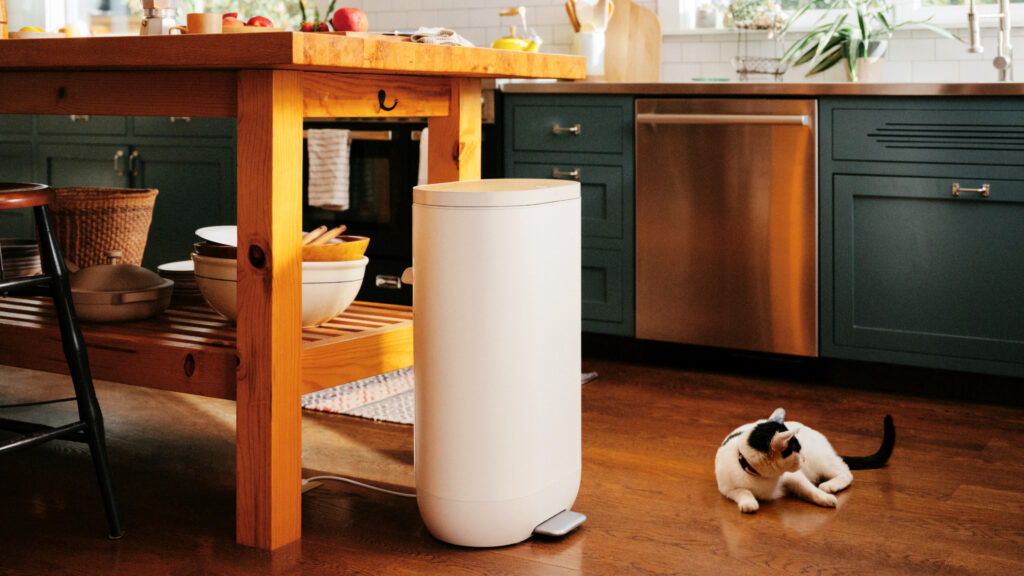
Another tech-centric solution and one of the more recent additions to the home compost appliance sector, the Mill Kitchen Bin is slightly different from the rest: it’s not a composter per se. Instead of requiring you to have a garden or access to soil, it offers an optional subscription programme to take what it calls Food Grounds, and sells them to farmers to use as chicken feed, which ensures the grounds “stay in the food system”. The company has received the all-clear from the FDA to use the food scraps for animal feed. (Users can also use the grounds for their own compost, or utilise a community drop-off scheme.)
Launched by the former co-founder of the Nest smart thermostat, Mill is accompanied by an app where you can programme the grinding and track progress. It can take anywhere between three to 16 hours, depending on the volume of food. The average household would need to empty the bin every two to three weeks, with USPS pickup being set up through the app. And the company has conducted a life-cycle analysis that shows the impact of shipping is negligible, and can be more than offset by the food waste utilisation process.
Pros: It’s a very efficient product, and its tech-forward nature lets you control it from your phone, which is handy. There’s an extensive glossary of what can and can’t go in, and the subscription is all-inclusive of the bins and filters (which keep things odourless). Moreover, the motor is quite quiet.
Cons: Like the rest, it’s quite pricey – and this isn’t compost either (though the startup is transparent about that). Mill can’t handle flowers, what it says is “a bunch of sugar, cake or cookies”, or bioplastics like coffee pods – given these will go to chicken feed – while the app can sometimes be unreliable in terms of the estimated time remaining. The environmental impact is also a tricky thing: Mill says it will be “deliberate and thoughtful about our selection of potential farm partners”, and promises to take into account ethical and environmental concerns – but details are sparse for now.
Where to buy: You can subscribe to a Mill Kitchen Bin for $396 a year, or $45 per month, via its website – right now this is limited to US consumers.
Aerobin
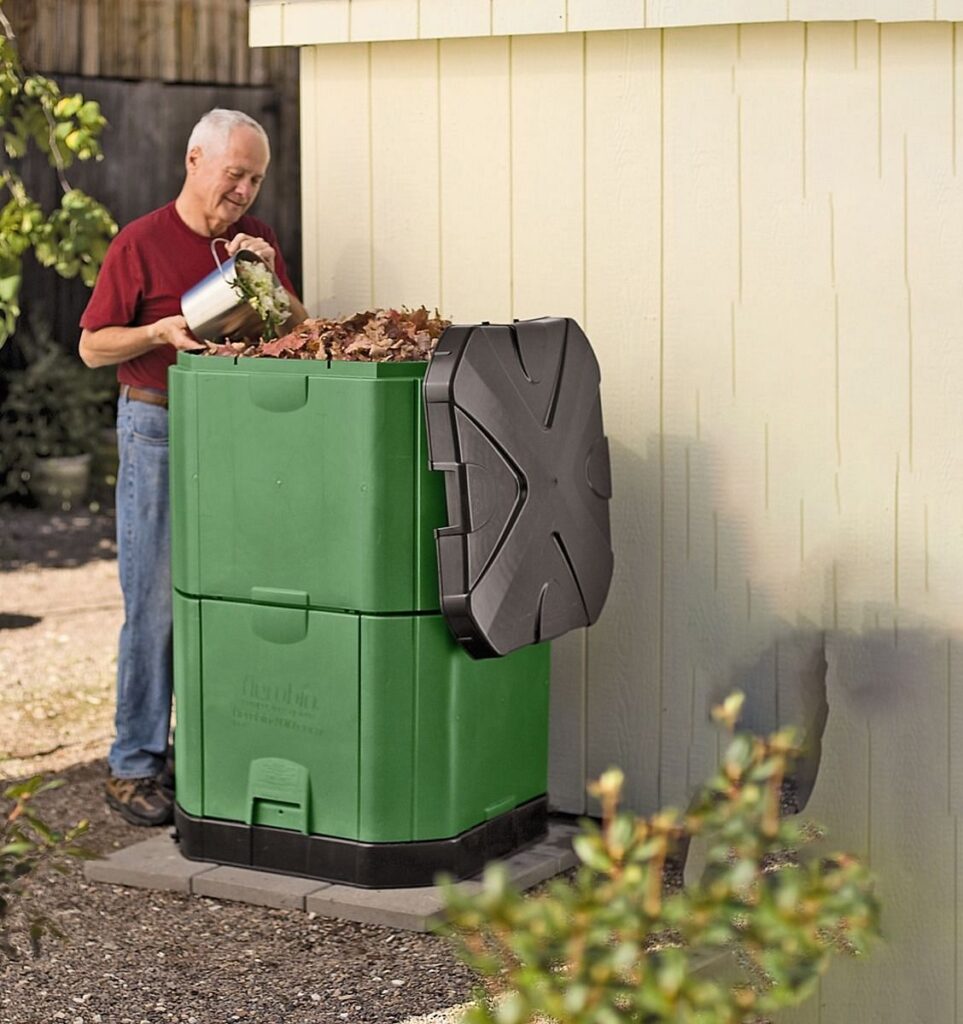
The Aerobin home composter is a much heavier-duty product than most. It has a 200-litre capacity and an aeration tube running through it vertically, which speeds up the process in comparison to conventional compost bins. It’s a hot composter that retains heat generated by the composting process and is insulated to enable year-round composting.
Aerobin doesn’t require any electricity and eschews the need to turn the waste during compost – so for those looking to keep energy bills down and save on emissions, it’s ideal. It uses natural organic aerobic decomposition to create fertiliser (both solid and liquid) in as little as 12 weeks. It’s a year-round process, though, with a continuous feeding cycle from the top and compost generation from the bottom.
Pros: This makes real compost and produces compost tea as well. It’s a continuous process, and makes for a high-quality result, according to reviewers, plus it doesn’t require much maintenance.
Cons: It’s obviously huge, and comes in 400- and 600-litre versions as well so you’ll need a garden/outdoor space for this product. Since it uses an aerobic process, it can’t handle any cooked or processed food, meat or (usually) dairy- but that shouldn’t be a problem for the plant-based amongst us?
Where to buy: The Aerobin is available on gardening websites and stores globally and starts at around $300. Select your country on its website to find out more – and check out Exaco for the US and Original Organics for Europe.
Reencle Prime
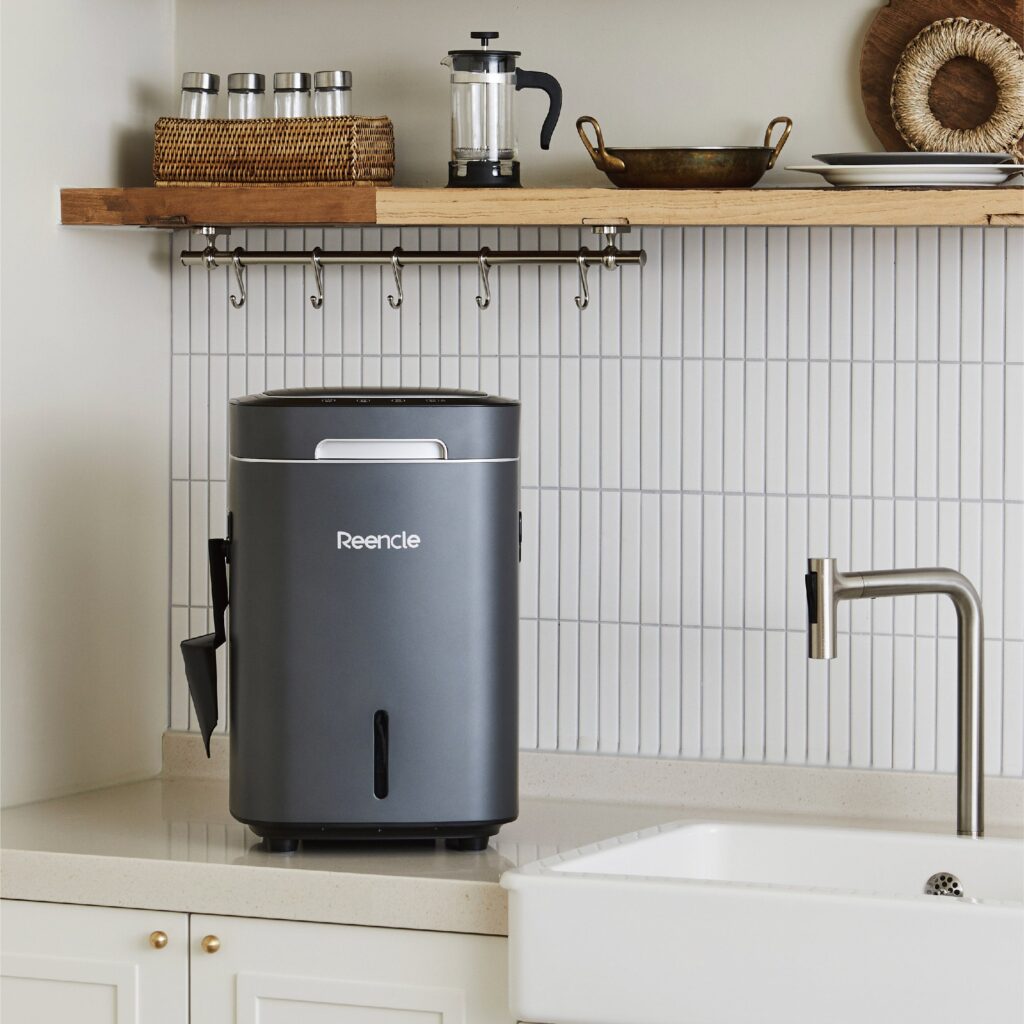
The Reencle Prime’s premise is to recreate natural processes inside your kitchen, using fermentation, a microbe mix and water to turn your food waste into fertiliser. It’s similar to the horticultural process of Bokashi, which employs bacteria to break down food waste.
The microbe mix – made up of rice husks, vermiculite, nonpathogenic bacillus bacteria, ammonium sulfate and wood pellets – only needs to be added once, as long as the device is turned on and gets fed food waste occasionally. It can handle up to a kg of food per day and can decompose food in as little as 24 hours. It has an infrared sensor that opens the lid automatically, which makes things much more streamlined.
Pros: The Reencle Prime breaks down food waste very well, and makes real compost. It too has a carbon filter to keep out any unwanted odours (it has a purify button too). You can also add boneless meat and dairy here, and the continuous nature of the device means that you don’t need to wait to pile up enough food waste to start running the machine.
Cons: Sometimes, the wrong kind of bacteria can grow, which will make things smell worse (though there’s a solution here: just hit the dry button and let things dehydrate for a few days). It can’t take things like eggshells, and the infrared sensor can be a little oversensitive. Plus, it’s not cheap.
Where to buy: Reencle Prime is available on its own website for $499 (filters cost $25 a year).
BeyondGreen
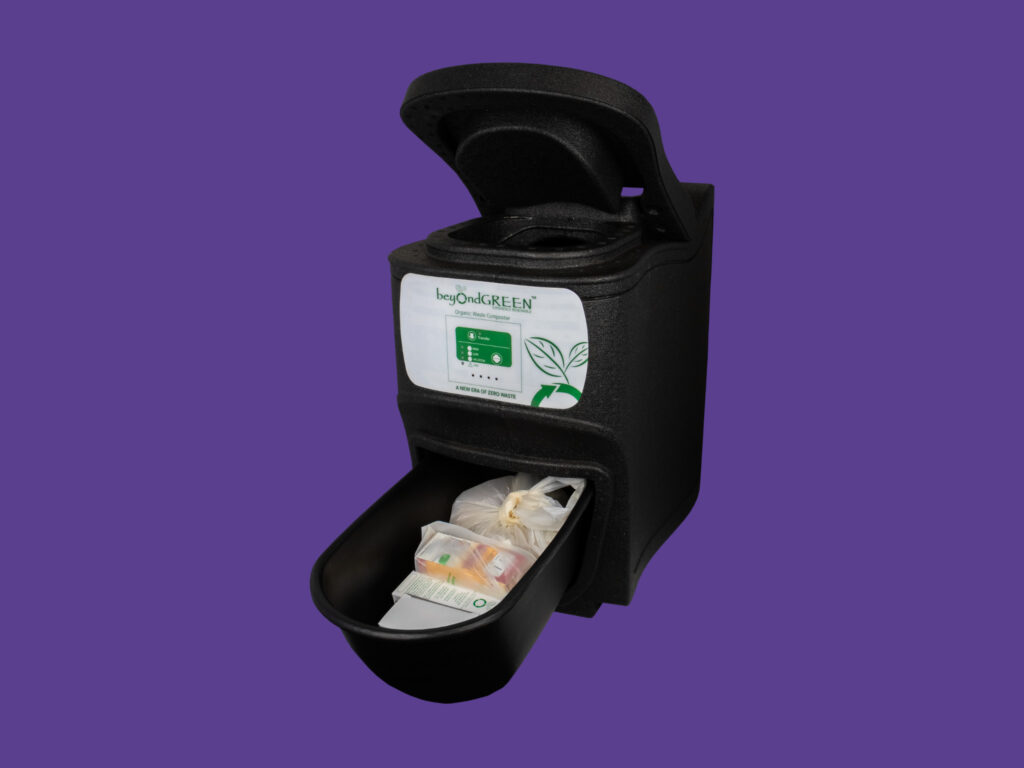
This one’s a little different than the rest. Instead of heating and dehydrating, the BeyondGreen Kitchen Waste Composter heats and stirs the waste in a heat-resistant form to encourage natural bacteria to break down the food. You need wood chips and baking soda to kickstart the process, which takes at least seven days.
Pros: It’s real compost that’s well-mixed and easily collectable in a container at the bottom of the device. Plus, it can take in pet waste and kill off pathogens with its high temperatures.
Cons: Since it mixes instead of grinding, the resulting compost can sometimes have chunks and larger bits of waste, which need re-composting. Tougher or larger waste may need to be cut up or crushed before being put into the appliance. Plus, it doesn’t have a filter, which means that while the foam cover seals it well, opening it to add more waste will subject you to some rancid odours. This is also on the expensive side.
Where to buy: The BeyondGreen Kitchen Waste Composter is available on its own website for $429.99.
Miracle-Gro
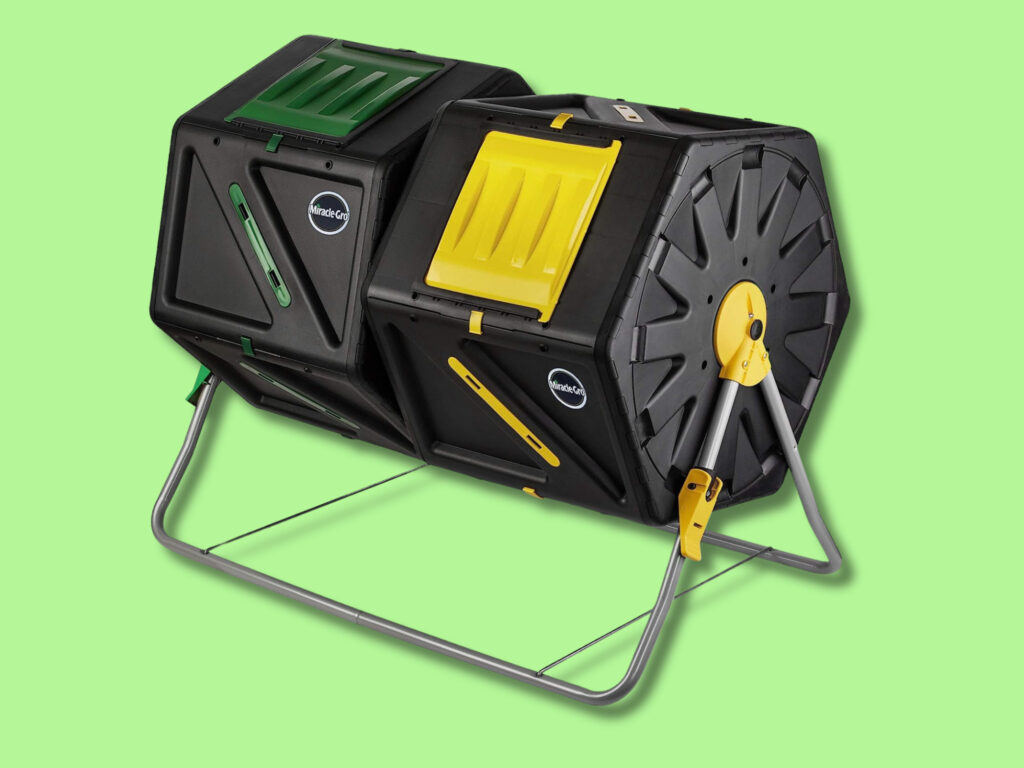
Before the home composting market got Silicon Valley-ed and tech bros started fighting for waste space in your kitchen, there was Miracle-Gro. The OG of home composting makes real compost and comes in multiple capacities – 70 litres and 105 litres, or a dual-chamber version with two 70-litre tumblers. The product can turn food waste into fertile compost in four to six weeks, though it does require turning five to six times every few days. The dual-chamber model allows you to compost one set of waste while the other cures.
Pros: Again, real compost, and the sheer amount of waste you can turn is a massive plus. Moreover, it has a sliding door that makes it easy to access the tumblers.
Cons: All the models are outdoor compost bins, so if you’re in an apartment with no access to garden spaces, this might not be the best option for you. Additionally, it’s complex to assemble initially say reviewers.
Where to buy: The Miracle-Gro compost tumblers are available via Amazon, starting at $79.90 for the single chamber, and $109.90 for the dual chamber.

